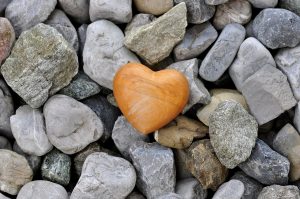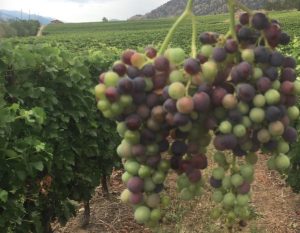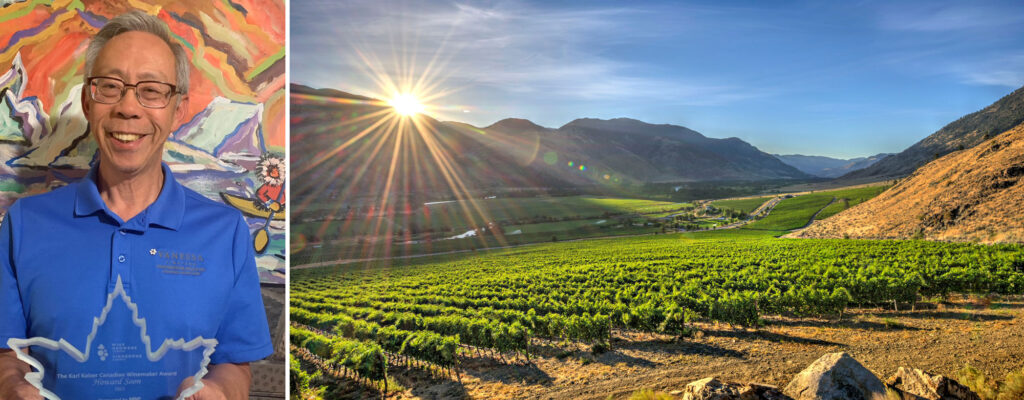-
Our very own Howard Soon, Master Winemaker was the recipient of The Karl Kaiser Canadian Winemaker Award, presented by the Wine Growers British Columbia and Wine Growers Canada at the Wine Growers British Columbia Industry Recognition Awards’ virtual ceremony on July 21, 2021.The Karl Kaiser Canadian Winemaker Award was created in 2018 to celebrate great Canadian winemakers, in honour of the legacy of the late Karl Kaiser, a Canadian wine industry pioneer and viticultural visionary.Since joining the wine industry in 1980, Howard Soon has earned innumerable awards and accolades. In 2017 Vanessa Vineyard welcomed Howard to the team as Master Winemaker. In doing so, we’ve been able to produce some of the most profound reds in Canada. A true pioneer in the BC wine industry, Howard has been on the leading edge of winemaking innovation for over three decades, one of the first people to be named to the Order of Canada for everything he’s accomplished and contributed to the wine industry, and continues to create the most precise flavour profiles that reflect our unique vineyard.From the entire team at Vanessa Vineyard, Congratulations Howard!Read more about the award here.
-
2015 Cabernet Franc has arrived!
Father to Cabernet Sauvignon and Merlot, 3rd wine of Bordeaux, Cabernet Franc has arrived!
Nature’s Drama
Centered in one of the hottest vineyards in British Columbia, Vanessa Vineyard Cabernet Franc vines are ideally located to make the most of all that sun.
Growing Cabernet Franc is not easy. Most viticulturists will tell you it is one of the harder varietals to grow successfully. It’s an extremely vigorous grape that wants to run away on you if you are not paying attention.
Rocky soil is the perfect balance for an energetic vine. To produce high quality grapes, the vines must first be tamed. Vanessa Vineyard’s location offers some unique advantages in this regard. The rocky soil helps to control the vines natural instincts to grow and strikes a perfect balance that creates a more concentrated grape.
Mature vines + lots of heat = Opportunity!
2015 marks the first year that Vanessa Vineyard produced a single varietal Cabernet Franc. This is a creation that is the result of tremendous faith and passion. Just a couple of bins came from the first crop in 2008, but the potential was clear from the first barrel. The wine was sublime, and Master Winemaker Howard could not wait to share the results with Proprietors Suki and John.
We have reached the culmination of all of that work. Eight years have passed and the vines have settled down and matured. The sun and rocks have done their job well and surrendered their future to the winemaker’s skill.
After 20 months in the barrel, the results for this 2015 vintage are outstanding. Big fruit, big body and generous flavour characterize this premier vintage.
Cabernet Franc Quick Facts:
Vanessa Vineyard Firsts:
A single barrel of Cabernet Franc was one of the first single varietal wines made from Vanessa Vineyard grapes at Sandhill as a test of the vineyard’s grapes capabilities by Howard Soon. Now Vanessa Vineyard has released it’s inaugural 2015 vintage.Distinctive Shaped Leaf:
 The Cabernet Franc leaf has a distinctive sawed tooth edge which looks like Rod Stewart’s hair.
The Cabernet Franc leaf has a distinctive sawed tooth edge which looks like Rod Stewart’s hair.Decanting Enhances:
Cabernet Franc is a wine that benefits tremendously from decanting. After 30 minutes, its natural spiciness will mellow into something softer and richer.First Batch Planted:
Vanessa Vineyard Cabernet Franc vines were planted in 2006 with the first crop coming in 2008.Food Pairings:
Cabernet Franc pairs well with a variety of foods due to its higher acidity. Pair it with roasted pork, lamb, and well herbed BBQ meats. It also goes well with rich cheeses, vegetables and fresh herbs.Regions:
Cabernet Franc is grown in many regions around the world. France is the largest, followed by Italy and the United States. Canada, Chile, Hungary and South Africa are some of the newer regions bringing outstanding examples to the market.With only 220 cases produced, we hope you’ll enjoy this inaugural gem with family and friends. Learn more about the Wine Club here, or by contacting us at thewineclub@vanessavineyard.com or +1.604.689.3882.
-
A Stony Heart
 The world’s best wine growing appellations have relatively poor, inhospitable soils, which while not ideal for most types of agriculture, are perfect for growing vinifera grapes. One of the most important factors in the terroir of a vineyard is the dirt, or should we say rocks? At the heart of our vineyard, it is mostly rocky/stony soil. Due to the quantity of rocks on the site, our vineyard development was initially challenging and actually broke our industrial-sized rock crusher! Although at first viewed as burdensome, the rocks have became a key asset for the soils.
The world’s best wine growing appellations have relatively poor, inhospitable soils, which while not ideal for most types of agriculture, are perfect for growing vinifera grapes. One of the most important factors in the terroir of a vineyard is the dirt, or should we say rocks? At the heart of our vineyard, it is mostly rocky/stony soil. Due to the quantity of rocks on the site, our vineyard development was initially challenging and actually broke our industrial-sized rock crusher! Although at first viewed as burdensome, the rocks have became a key asset for the soils.Vineyard soils have a major influence on wine character and taste, hence the French expression, goût de terroir or “taste of the earth”. Grapevine roots are remarkable, they can penetrate dozens of feet into soil in their search for water and nutrients, and they continue to grow throughout the vines’ lives. This means that the physical properties of the soil are important and its minerality fundamental to growing premium grapes.
Gravel soils allow for superior drainage, which is paramount to the vines and grapes. Winemakers are so convinced of this, some have gone to extremes to study the differences. Randall Grahm of Bonny Doon fame, for example conducted a wacky experiment adding rocks directly to wine to investigate their influence on flavour, which he believes added, “far more complexity and greater persistence on the palate”. UK wine writer Jamie Goode explores this in depth in his book, The Science of Wine from Vine to Glass.
Although we do not literally add rocks to our wine, the abundant rocks in our soil at Vanessa beneficially act to stress the vines. They also reflect sunshine to the leaves and berries, and allow the day heat to be harnessed and imparted throughout the cooler nights, thereby aiding in the ripening process. Additionally, our gentle sloping hillside and southwest exposure are optimal for the vines as they directly benefit from the afternoon sun, which contributes to the lengthening of the growing season and the production of intensely ripe fruit. With these factors the fruit is able to capture the minerality of the soils on which it grows that are unique to the land, and allows Vanessa Vineyard to produce fruit of the highest quality, with flavours and minerality that are distinctive.
It is this delightful sensation of minerality that is so prized among many wine enthusiasts and with Valentine’s approaching, we love that we have a stony heart…
-
Veraison to Harvest: A Sweet Time
 Véraison, the French viticulture term for the change of colour of the grapes, signifies an exciting time in the vineyard — the onset of ripening. Veraison represents the transition from berry growth to berry ripening, and many changes in berry development occur. In addition to the transition in colour from green to purple, throughout the process they also increase in volume, weight, sugar content and softness. After veraison, the berries are pliable, fruit acidity decreases and sweetness accumulates.
Véraison, the French viticulture term for the change of colour of the grapes, signifies an exciting time in the vineyard — the onset of ripening. Veraison represents the transition from berry growth to berry ripening, and many changes in berry development occur. In addition to the transition in colour from green to purple, throughout the process they also increase in volume, weight, sugar content and softness. After veraison, the berries are pliable, fruit acidity decreases and sweetness accumulates.We saw veraison start in our Vanessa vineyard last month. Later in the ripening process flavour maturity will also take place with the formation of flavour and aroma compounds — or “phenolic ripeness”. (Phenols are complex molecules, including tannins, in the grape skins that can contribute bitter flavours. As grapes ripen, they change from green and bitter to pleasantly astringent, to soft and ripe-tasting.) The whole process takes about six weeks with the balance between sugar, acid, and flavour compounds ultimately determining the pick date.
The interval from veraison to harvest is naturally different for each varietal, and is primarily dependent on heat accumulation and crop size. Merlot for example takes fewer heat units to ripen than Cabernet Sauvignon. Knowing the ideal time to harvest begins with tasting. Our winemaker is looking for specific flavours in each variety. In addition to tasting the grapes, we measure sugar levels, pH and acidity to also help us determine when our fruit is ready to be picked.
So far for 2016, the vintage is looking great and we are excited for harvest later this fall. Renowned local Master of Wine Rhys Pender writes about the vintage:
“It was looking like 2016 might be one of those very hot (too hot) vintages as the early budbreak and then hot temperatures through April, May and most of June had grapes rushing towards ripeness. The growing degree days were ahead of any other year on record. Mother Nature then stepped in and July ended up being the fourth coolest in Summerland and the third coolest in Osoyoos since 1998. This welcome cool weather and some unseasonal rainfall really put the brakes on the ripening and probably turned the vintage from a potentially dangerously hot one to an almost ideal one. The grapes’ flavour complexity seems to develop more if the growing season is stretched out a bit longer, and the cool July helped to do just that. August saw temperatures back to their normal levels and ripening resumed at a steadier pace. Although temperatures cooled down in early September and there were a few showers and some worried farmers, things have picked up again and the forecast for the Okanagan and Similkameen valleys is sun and mid-to-high 20s for the next 10 days at least. That will make the vintage shape up very nicely indeed…” Read more of Rhys’s comments on the Wine Align website.

